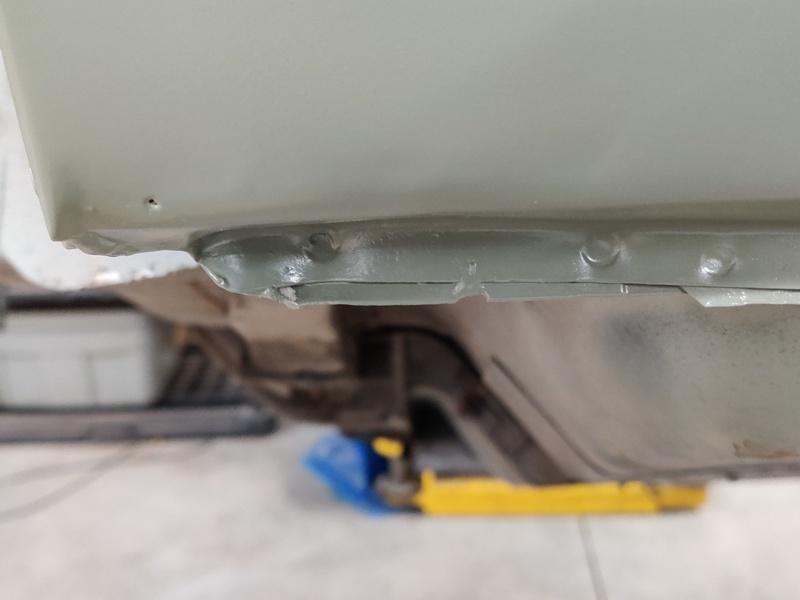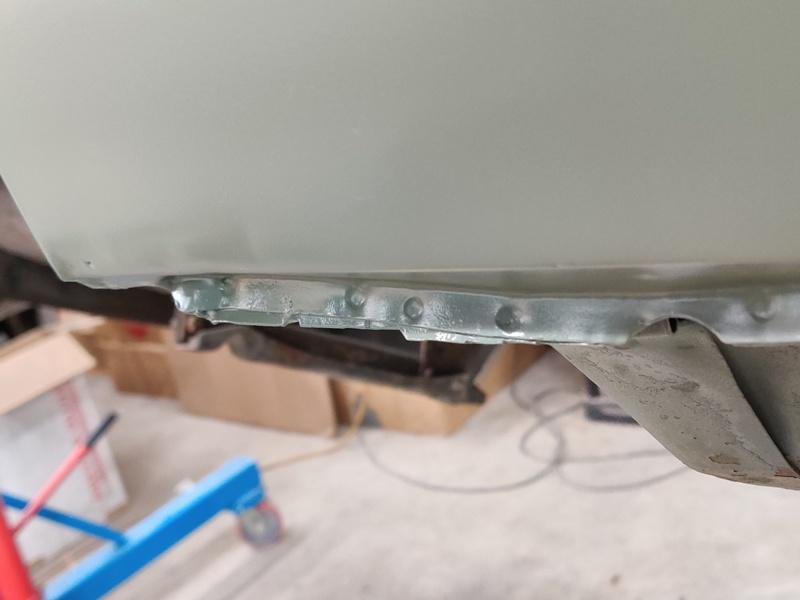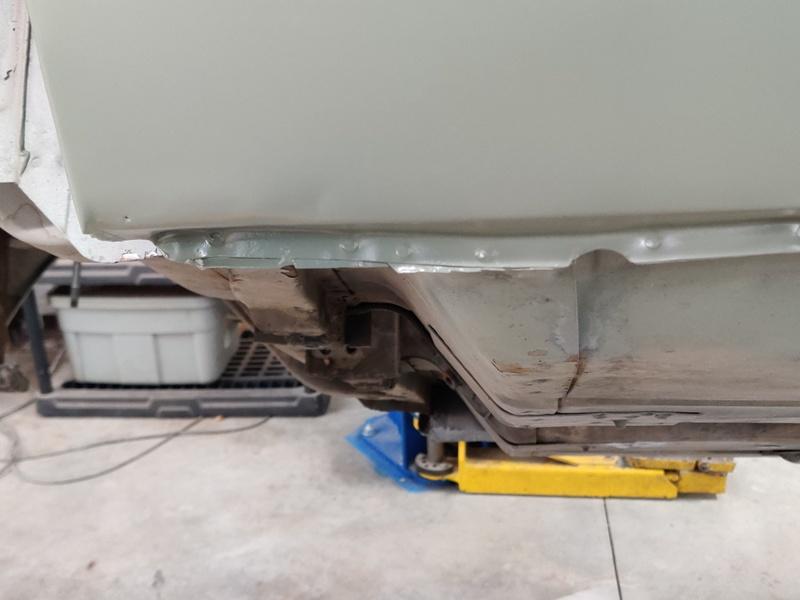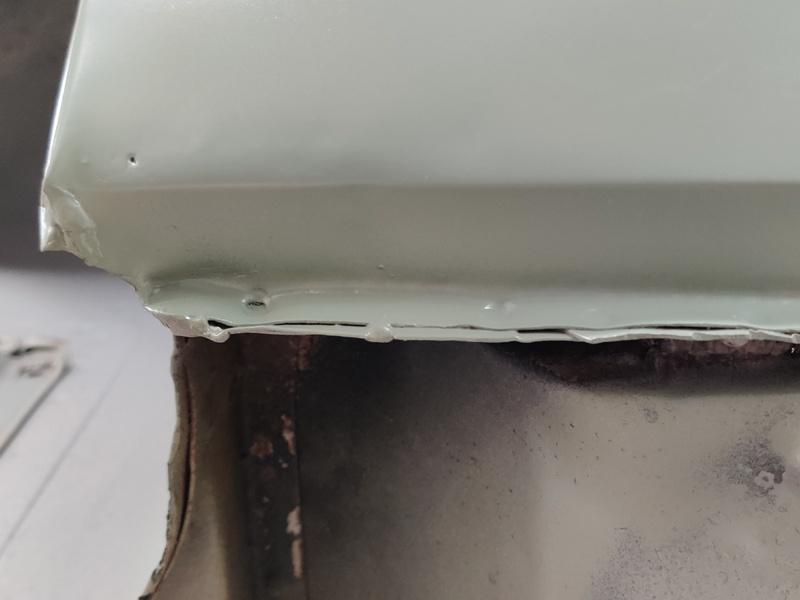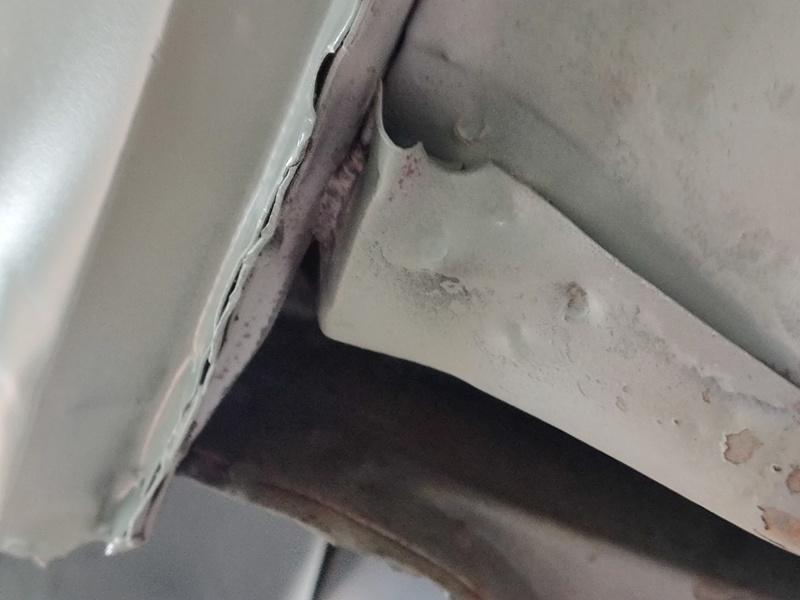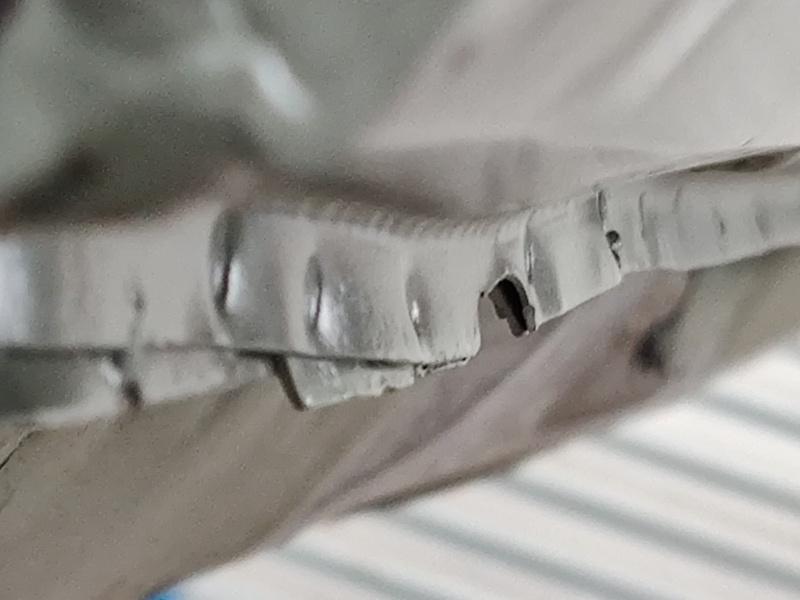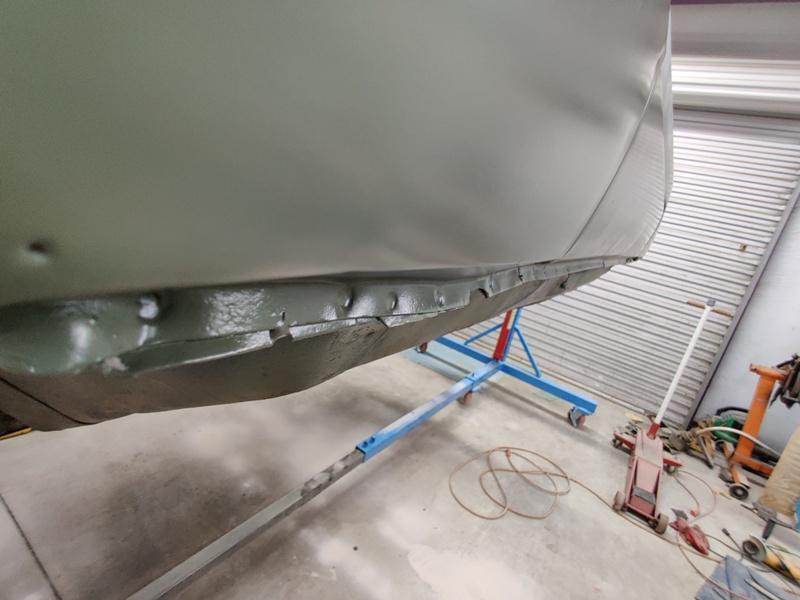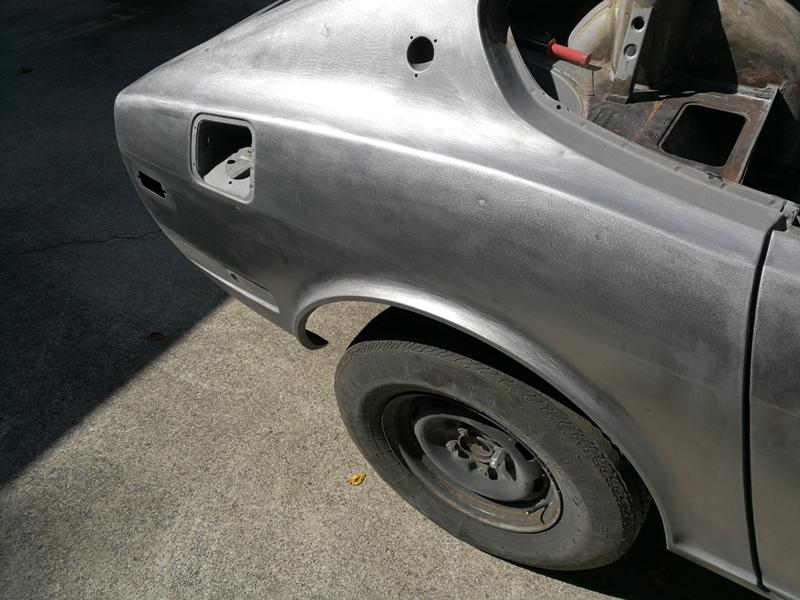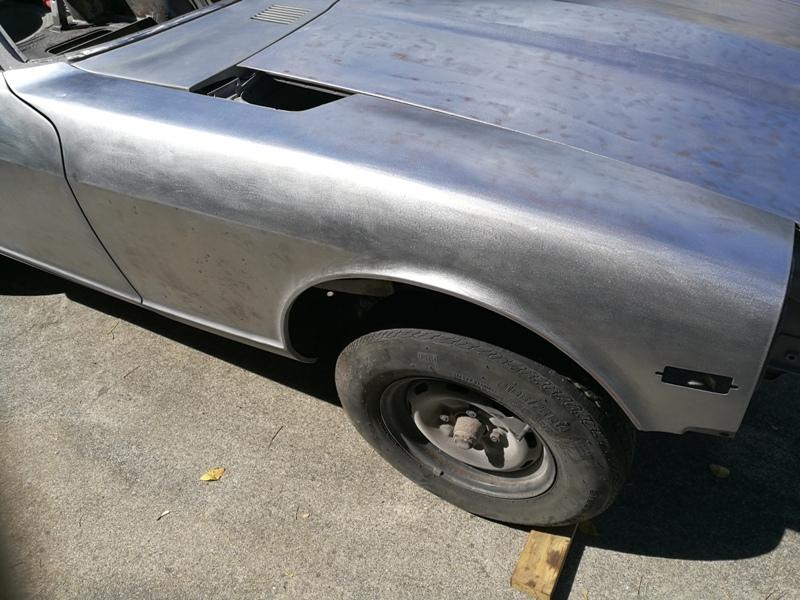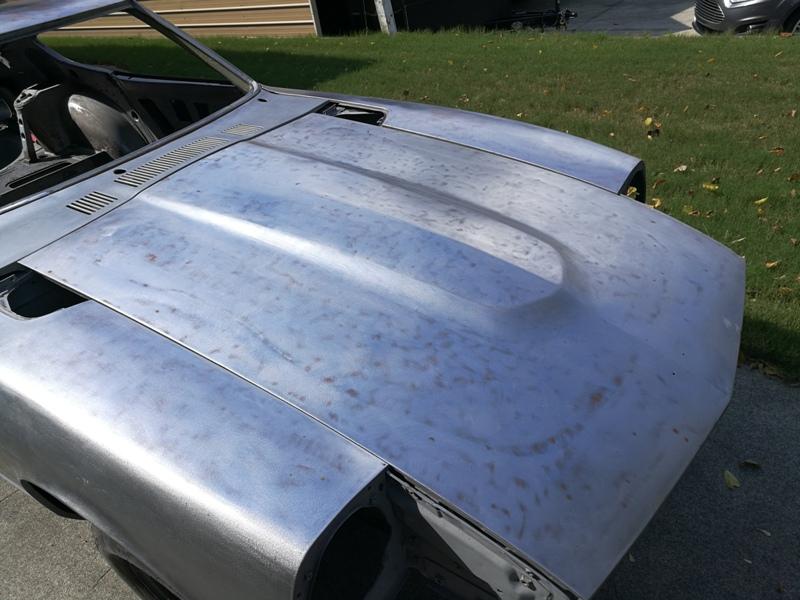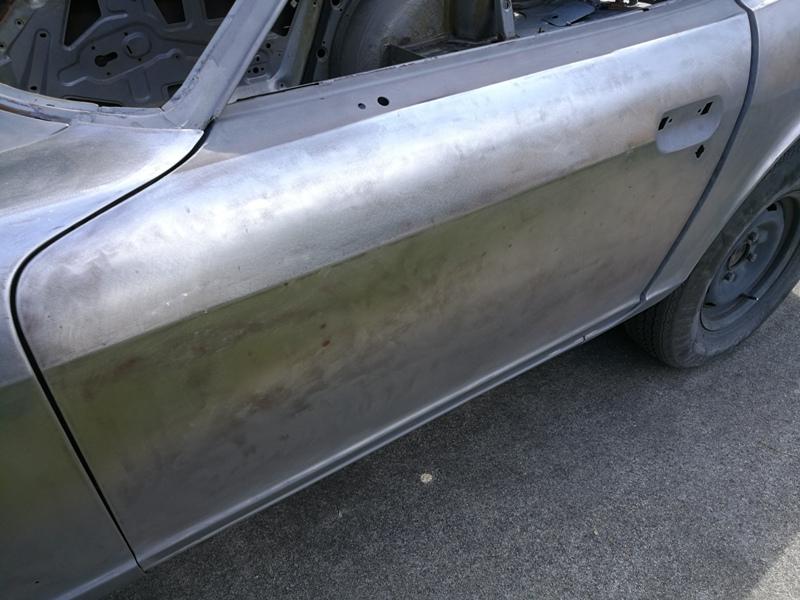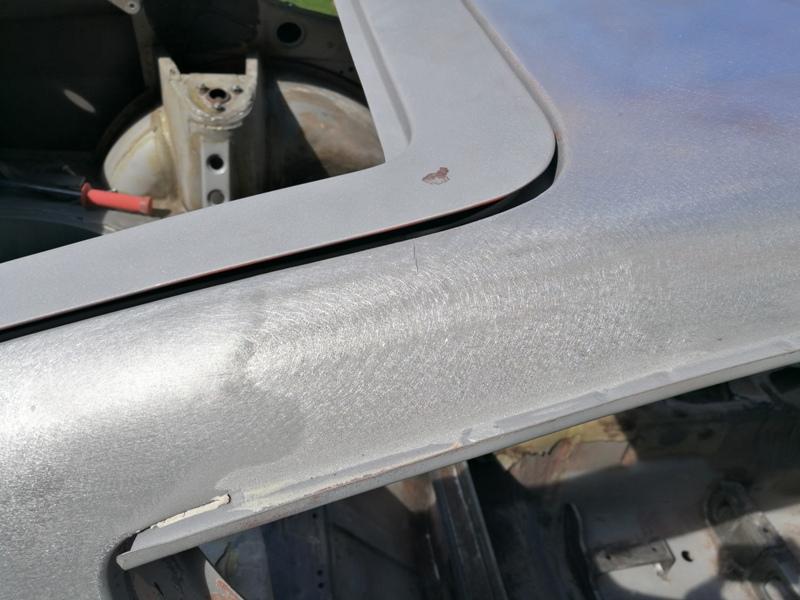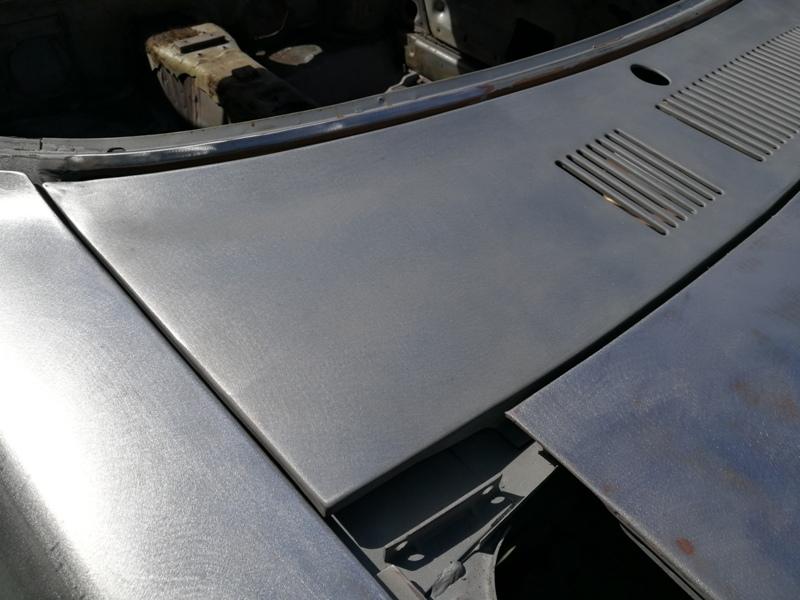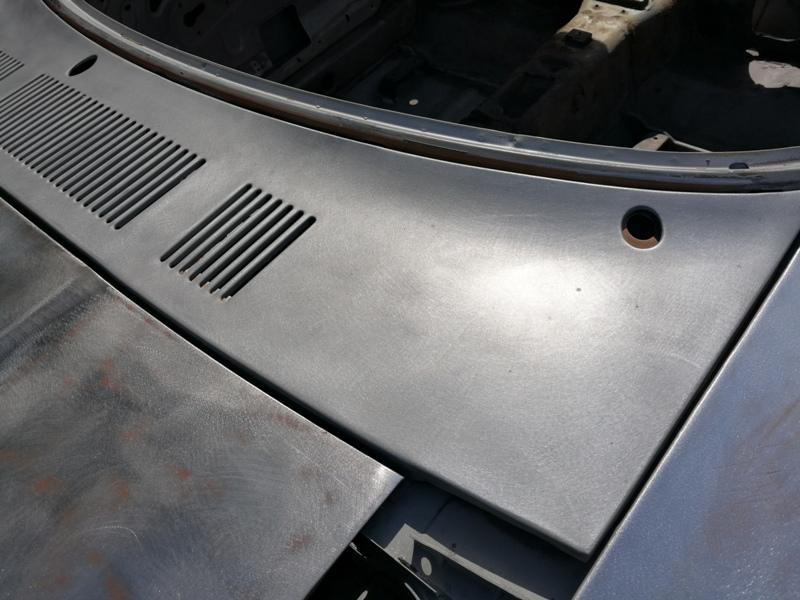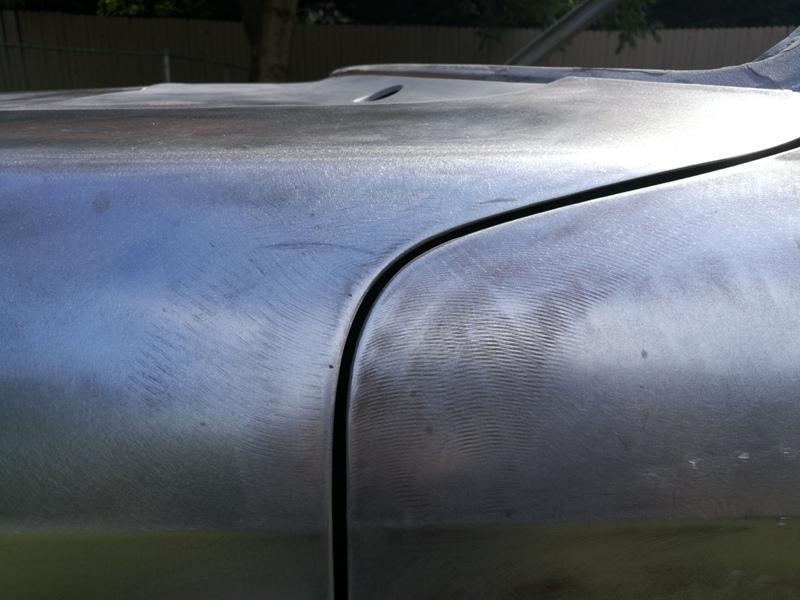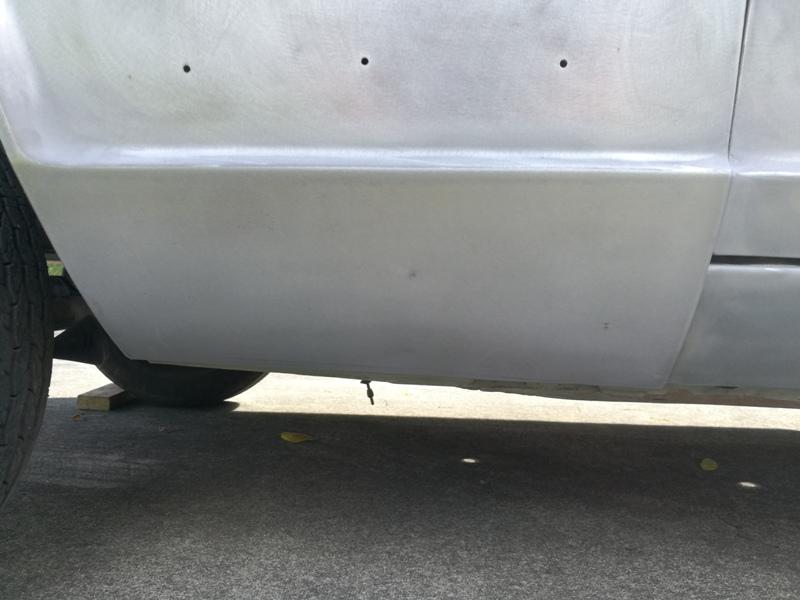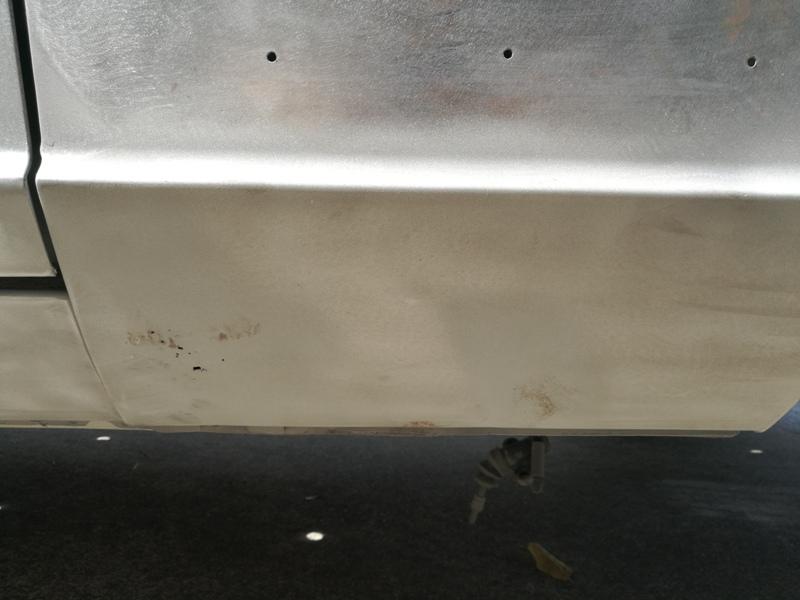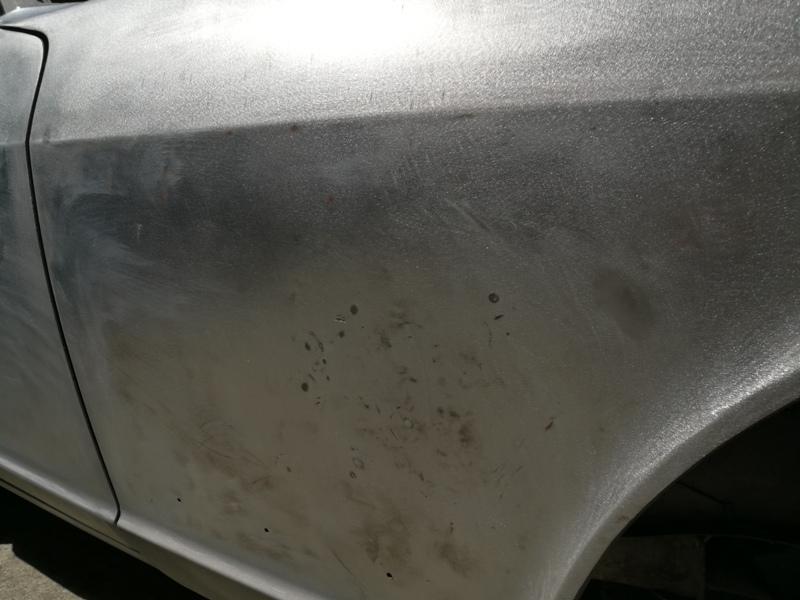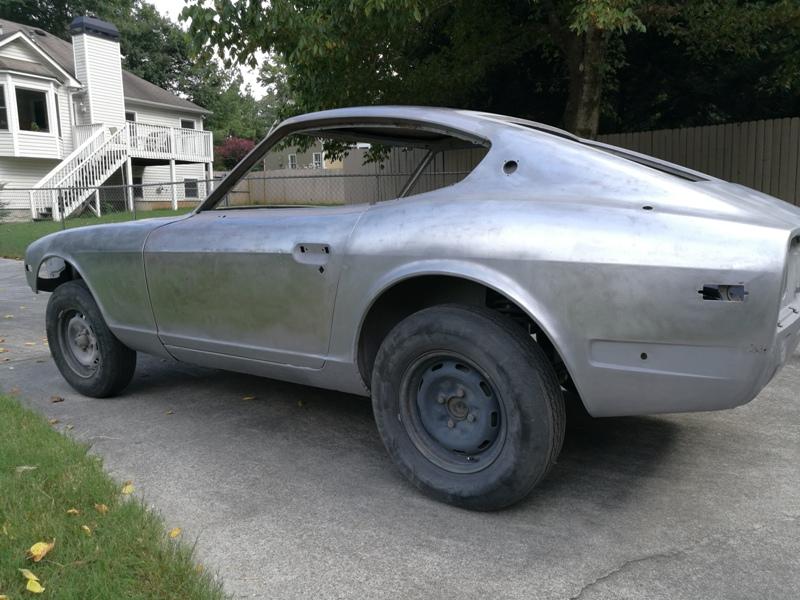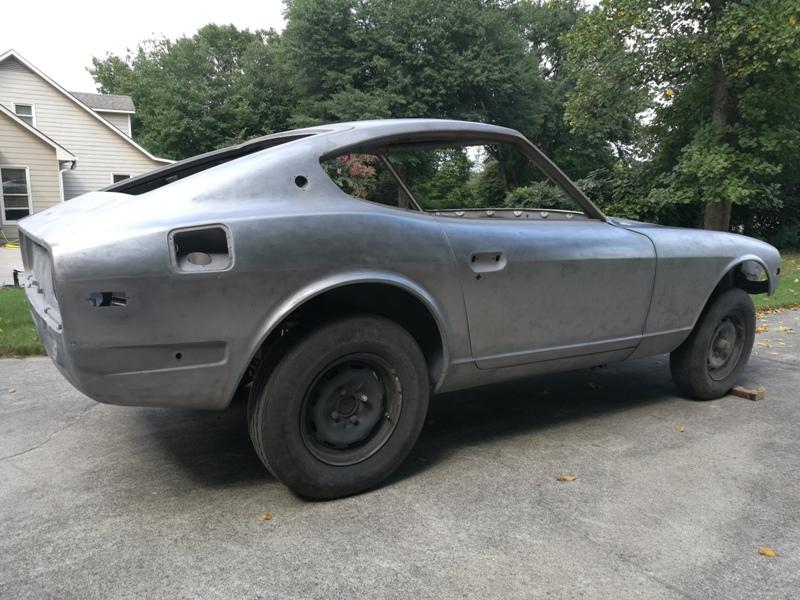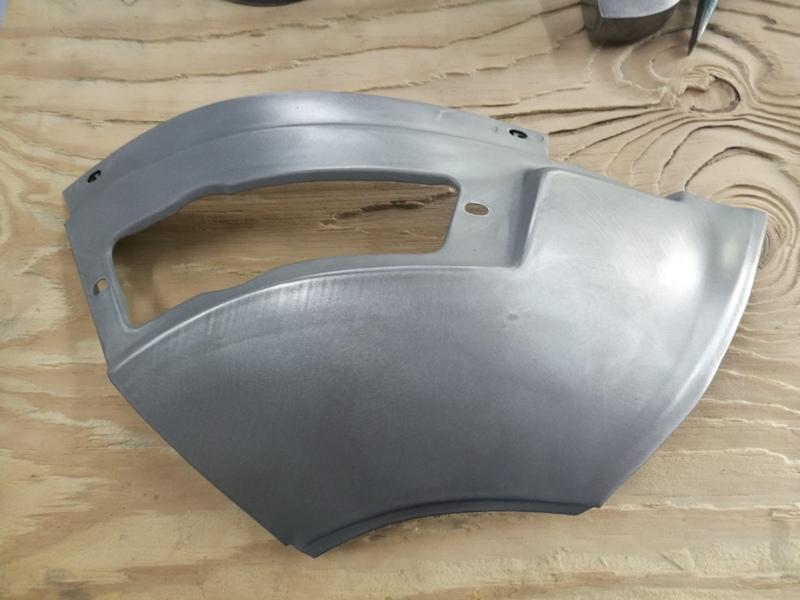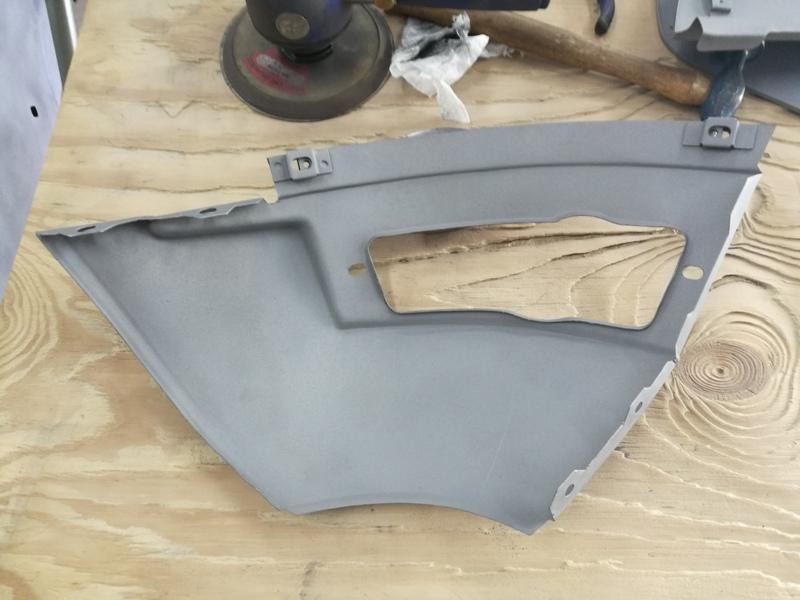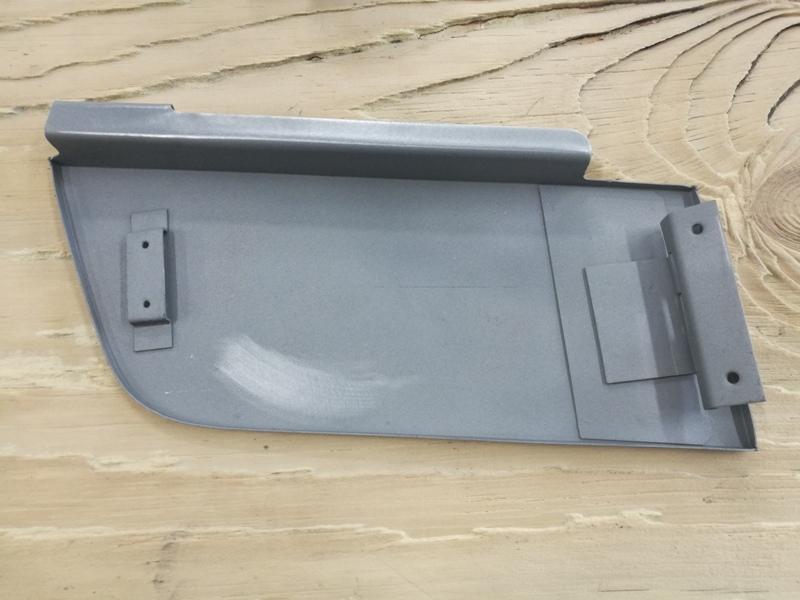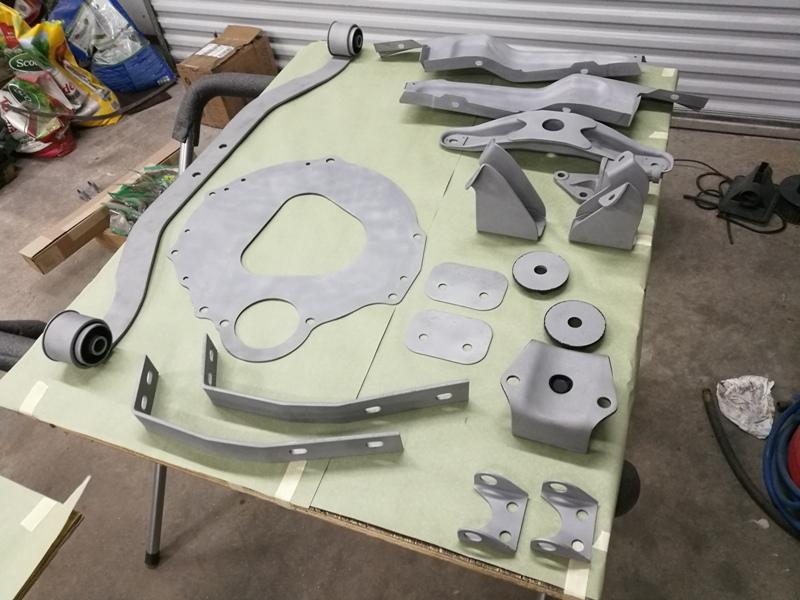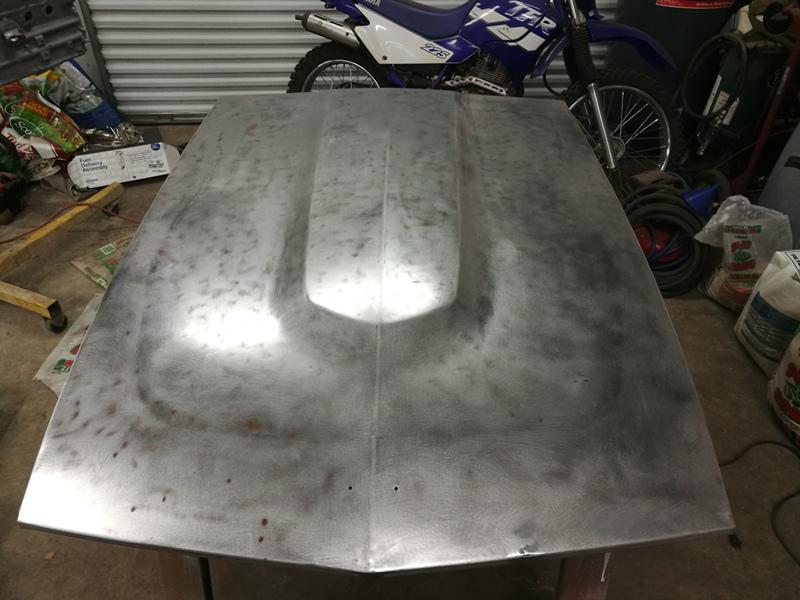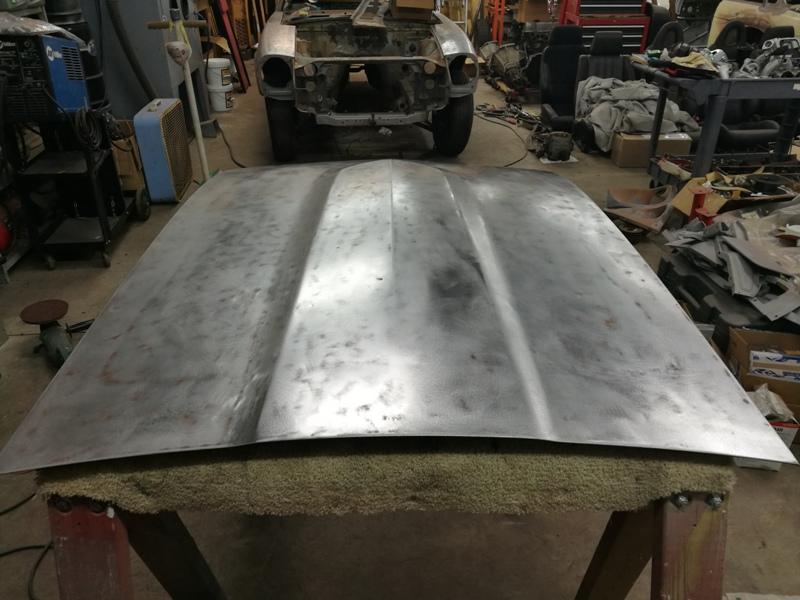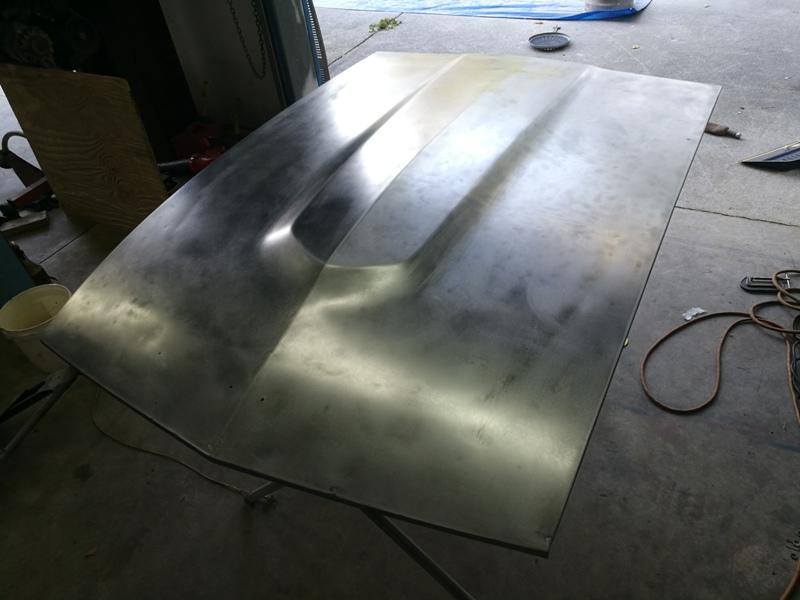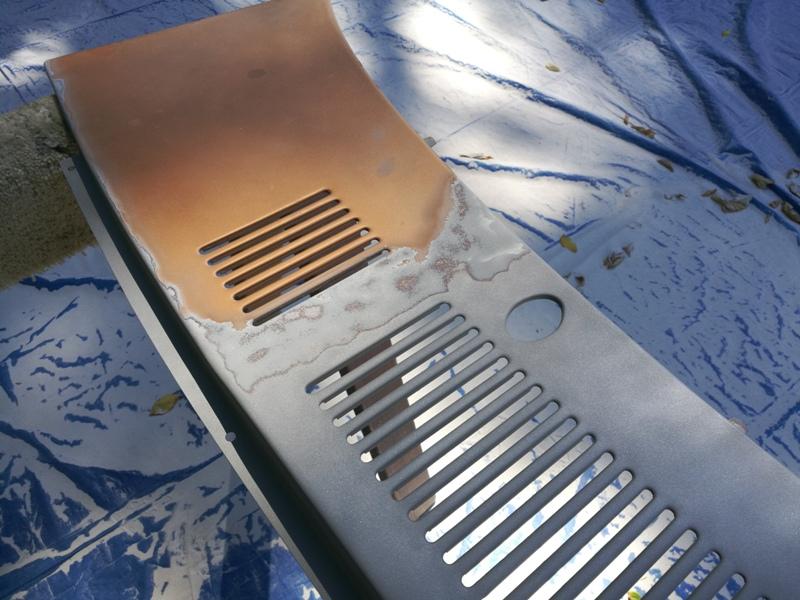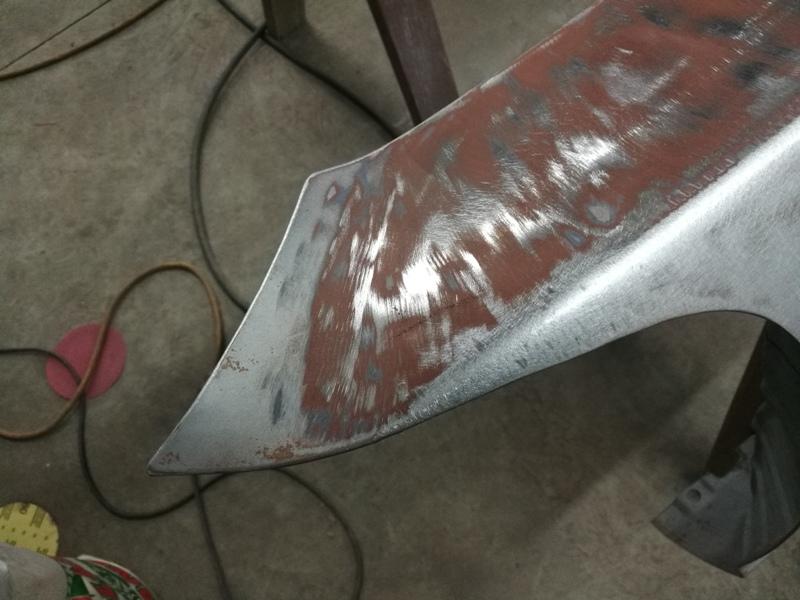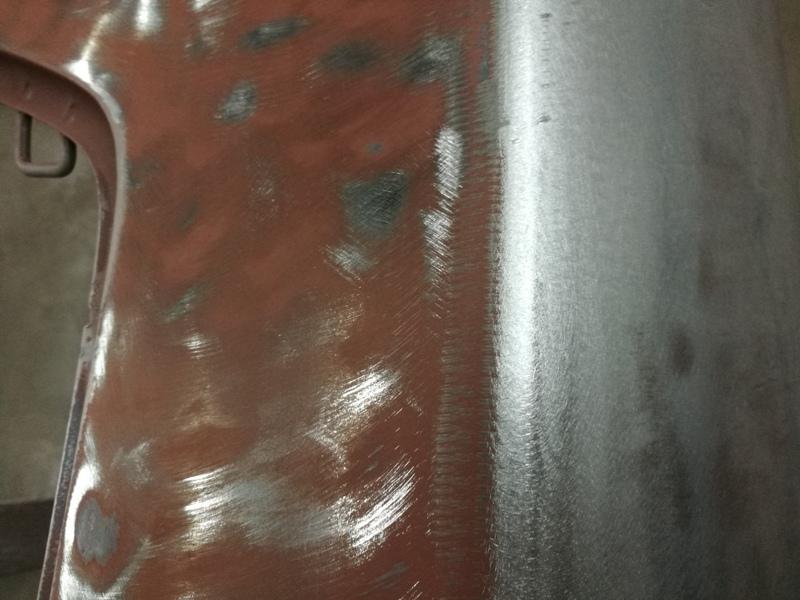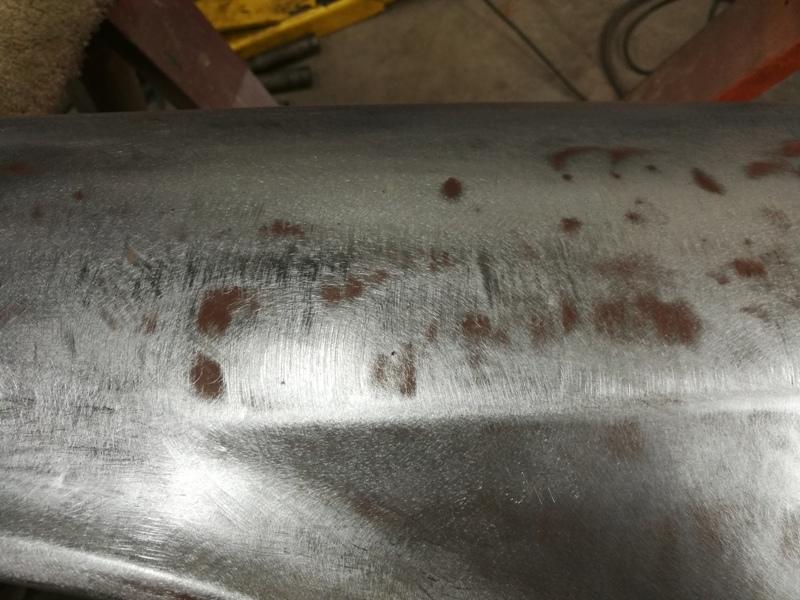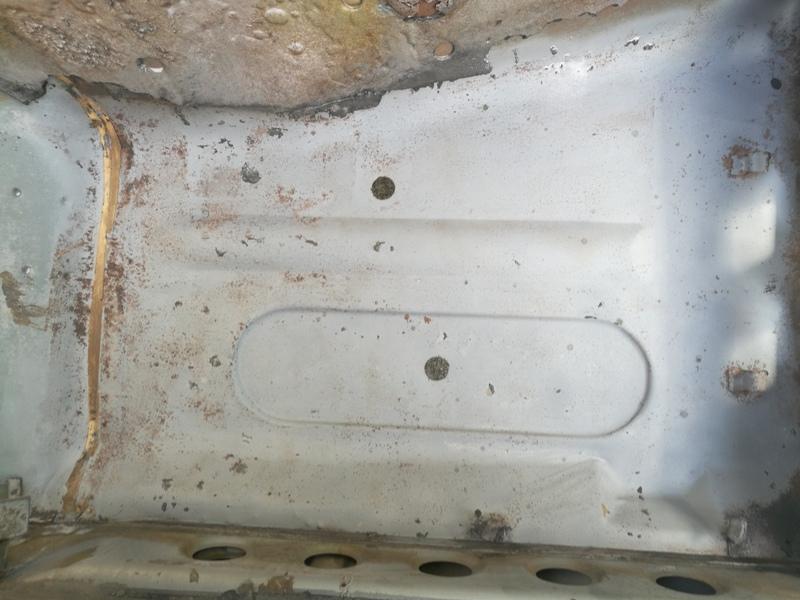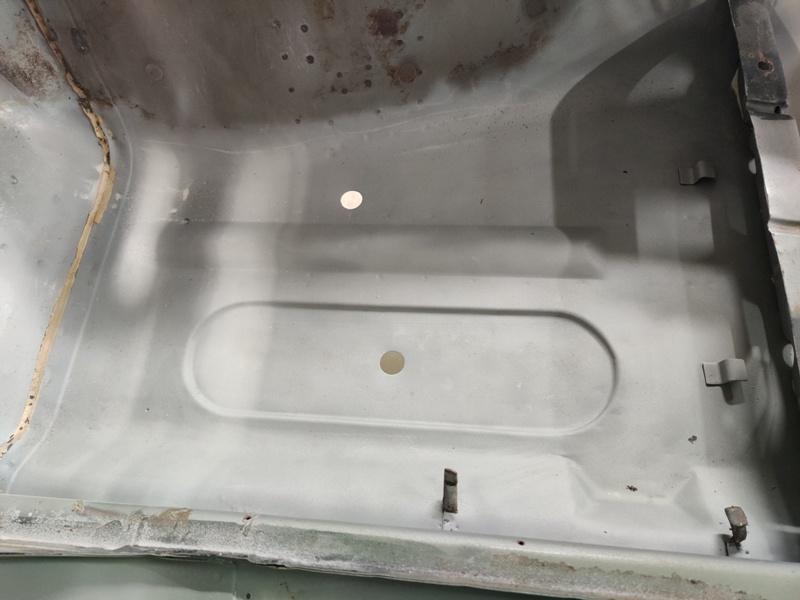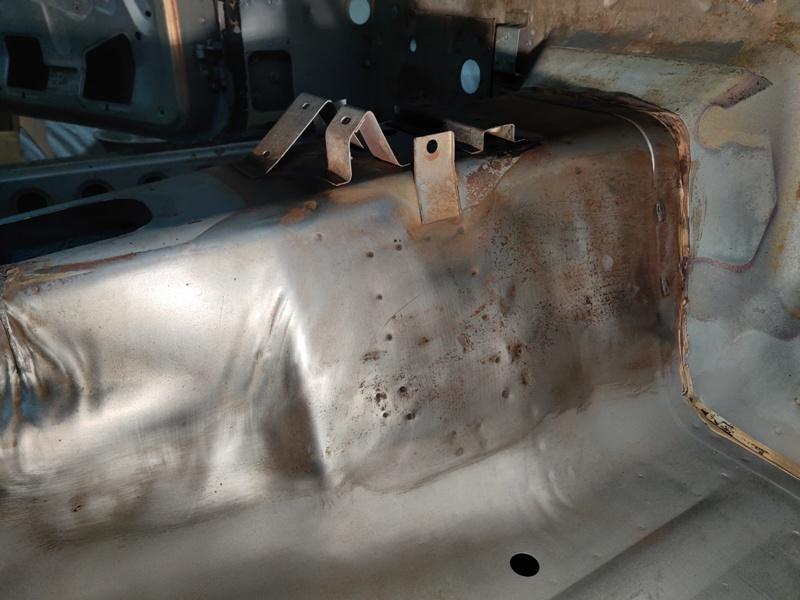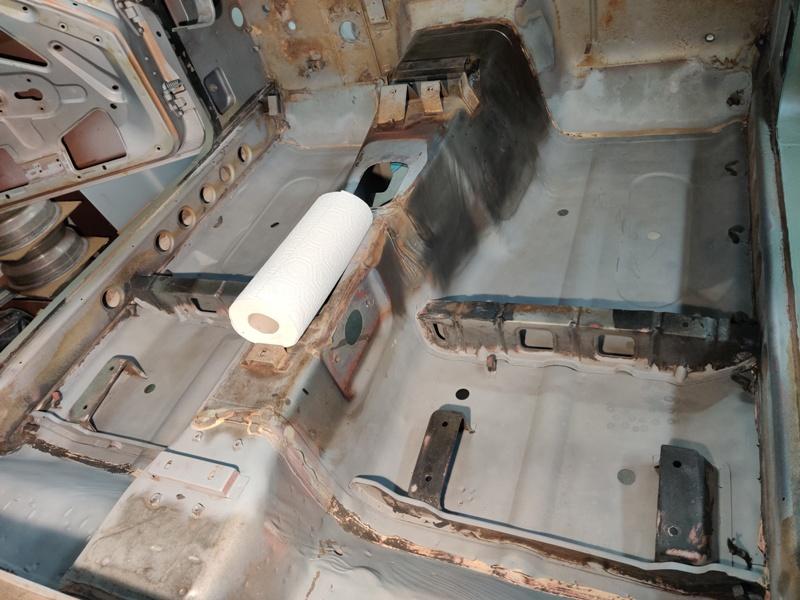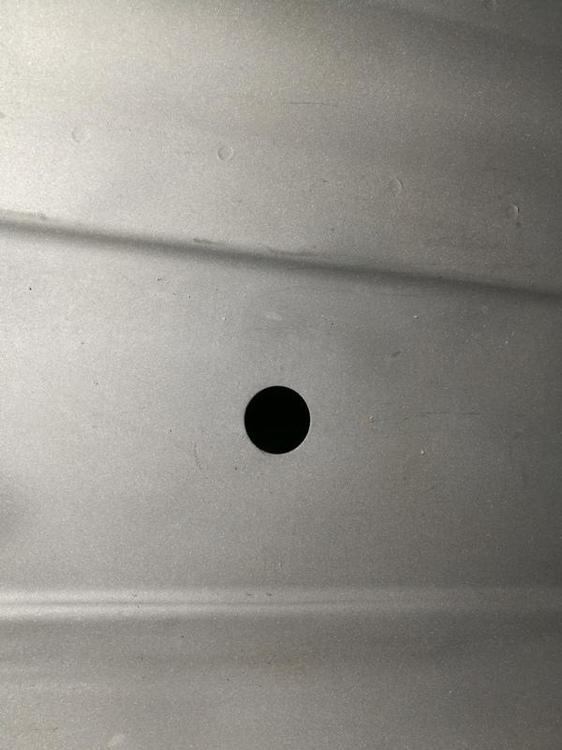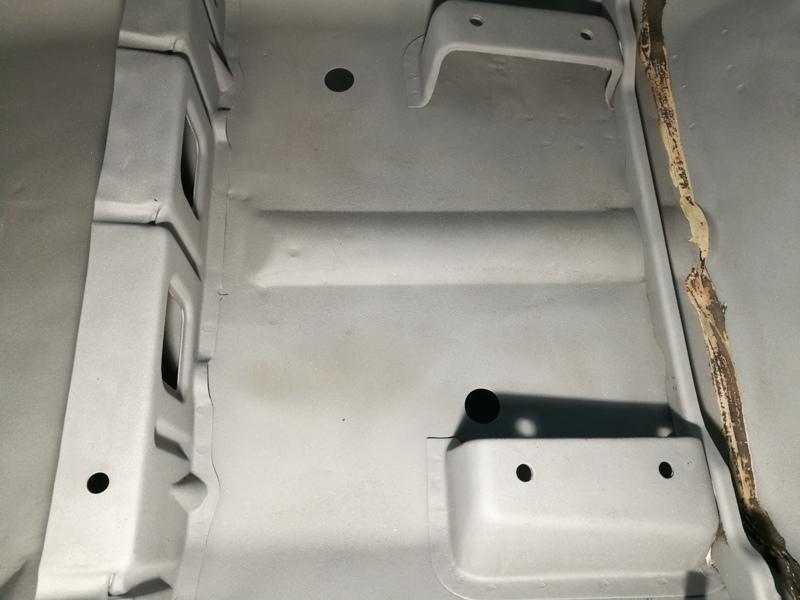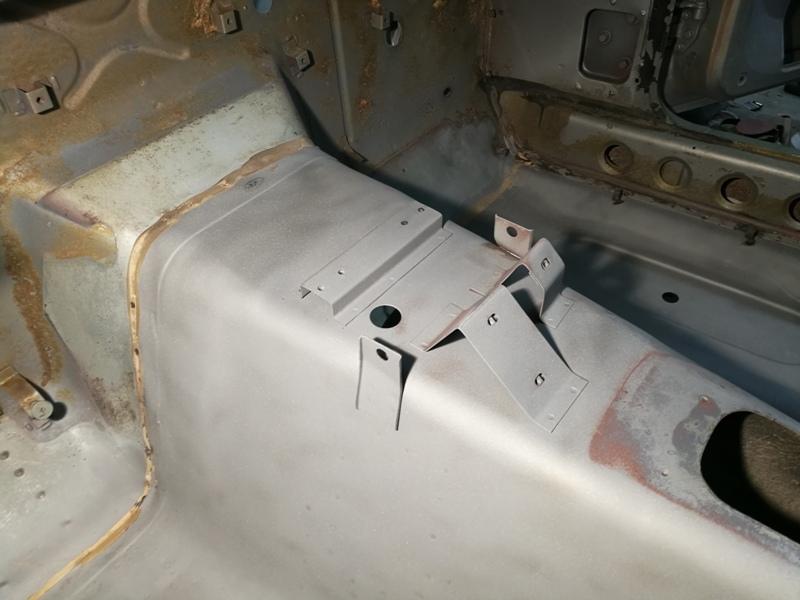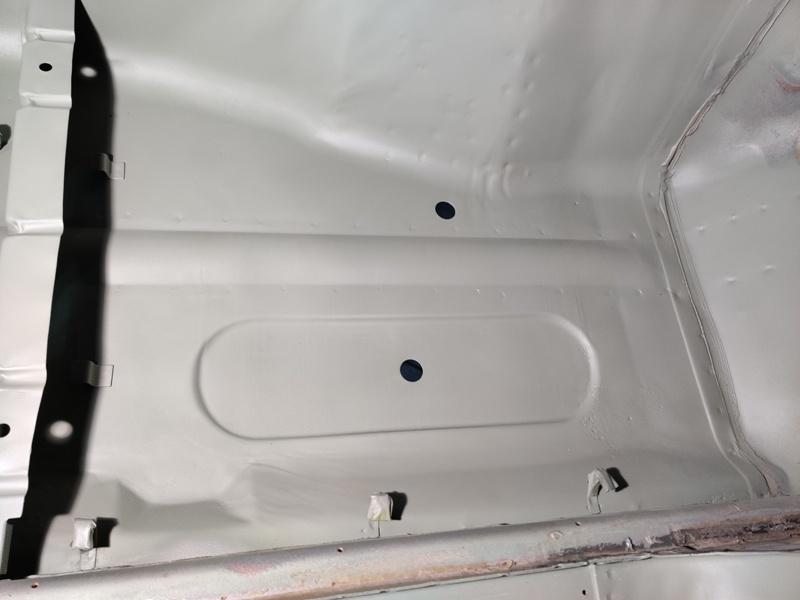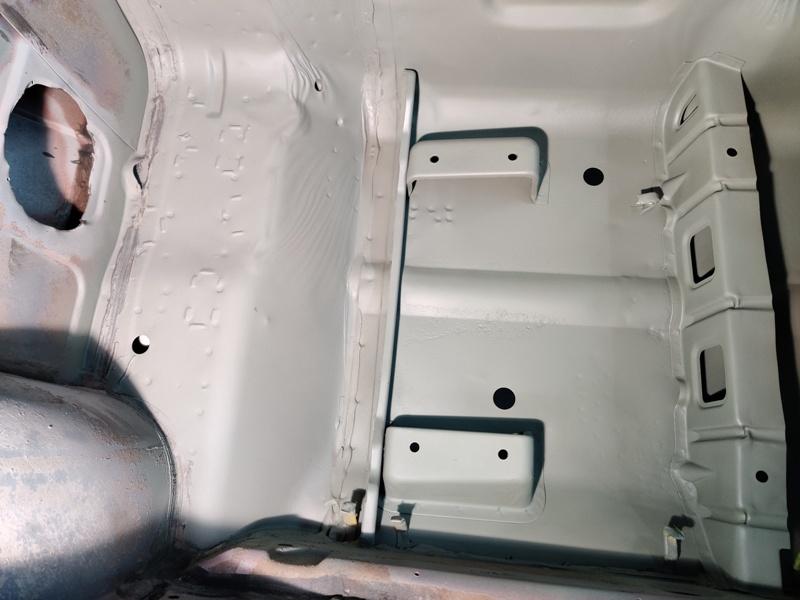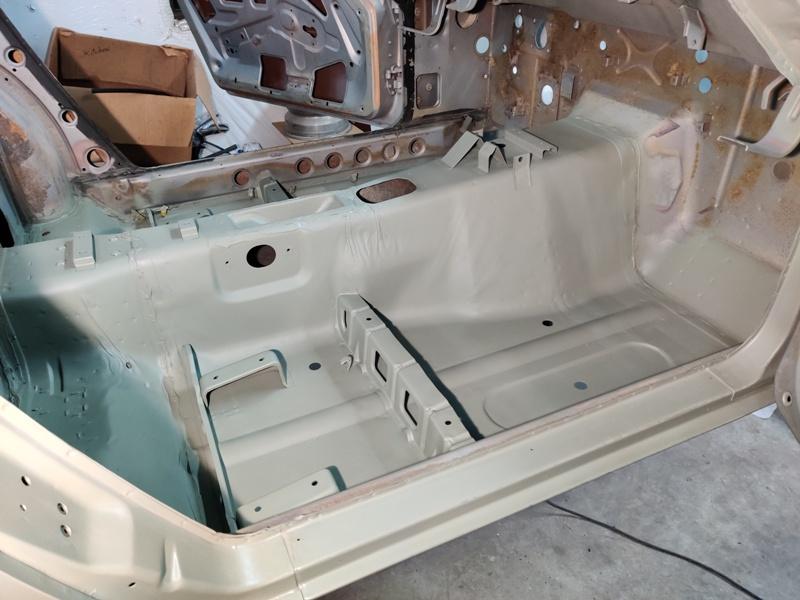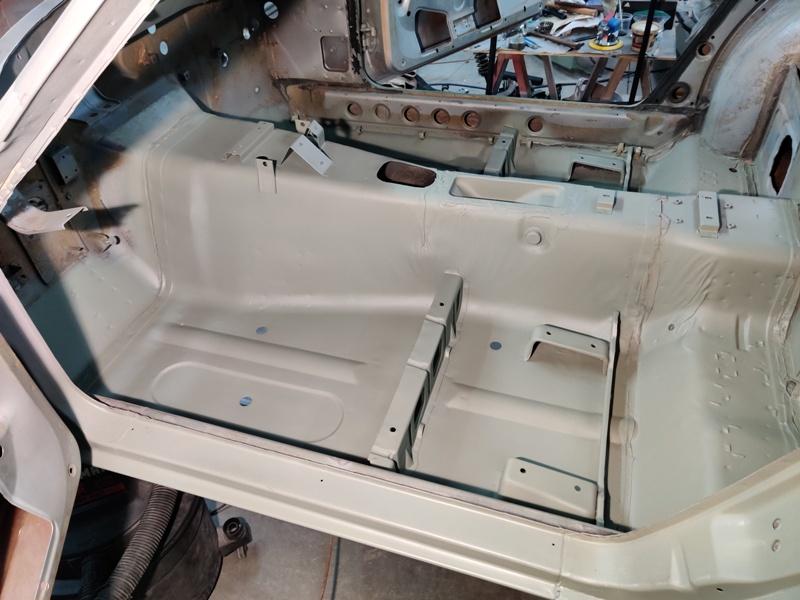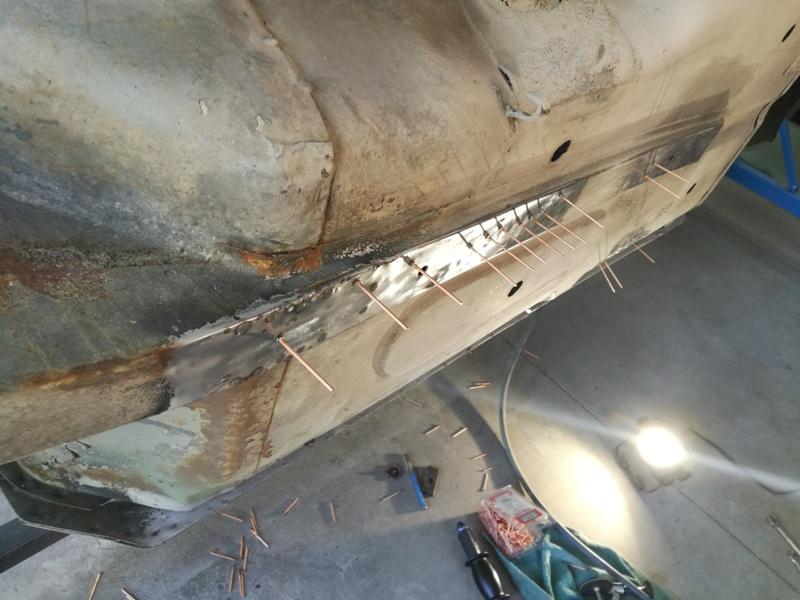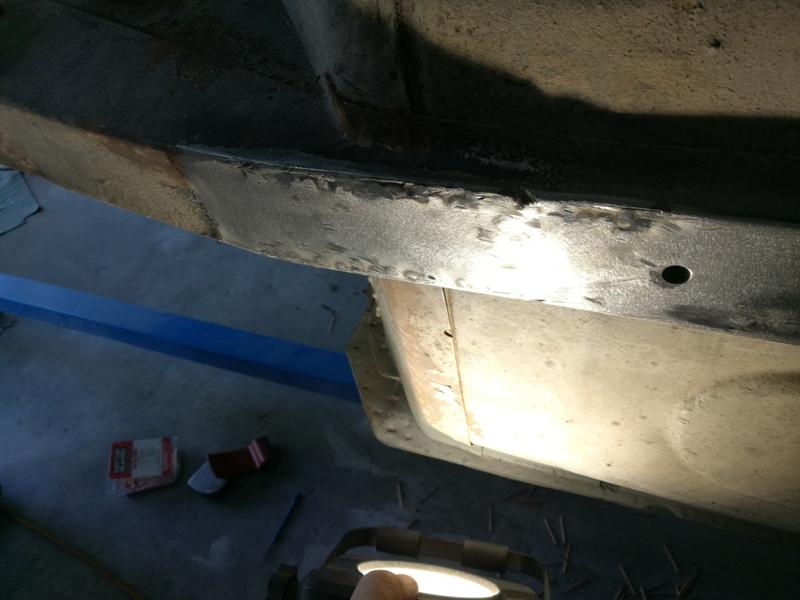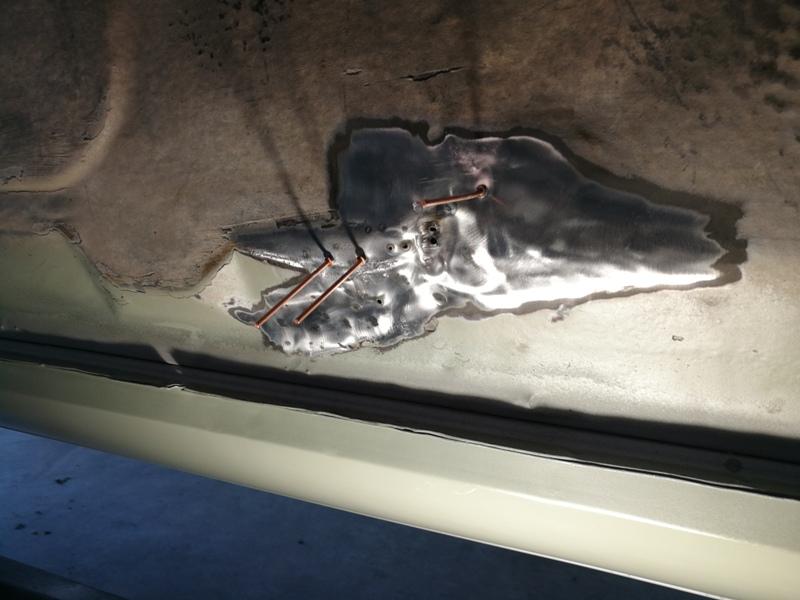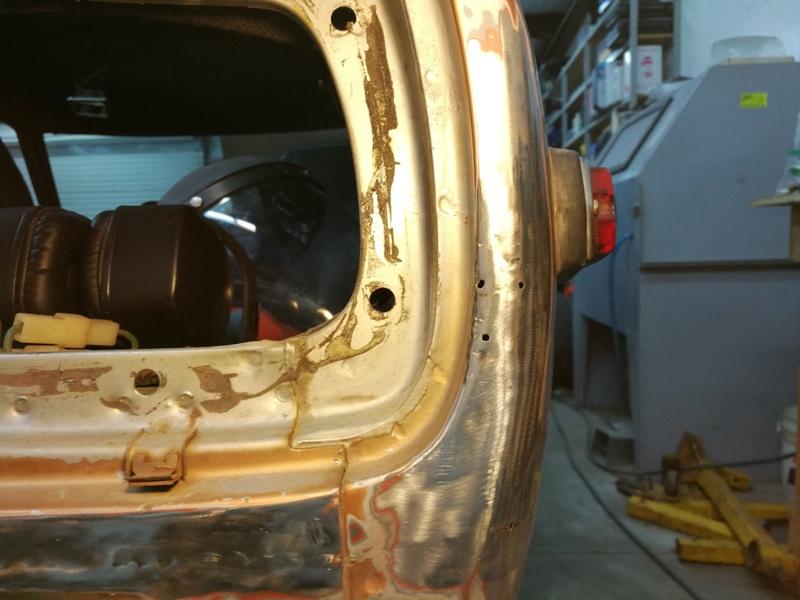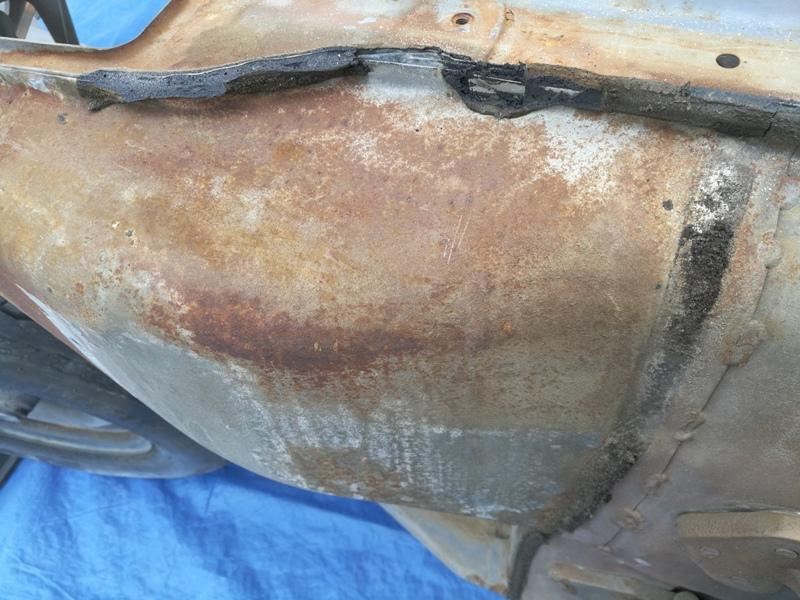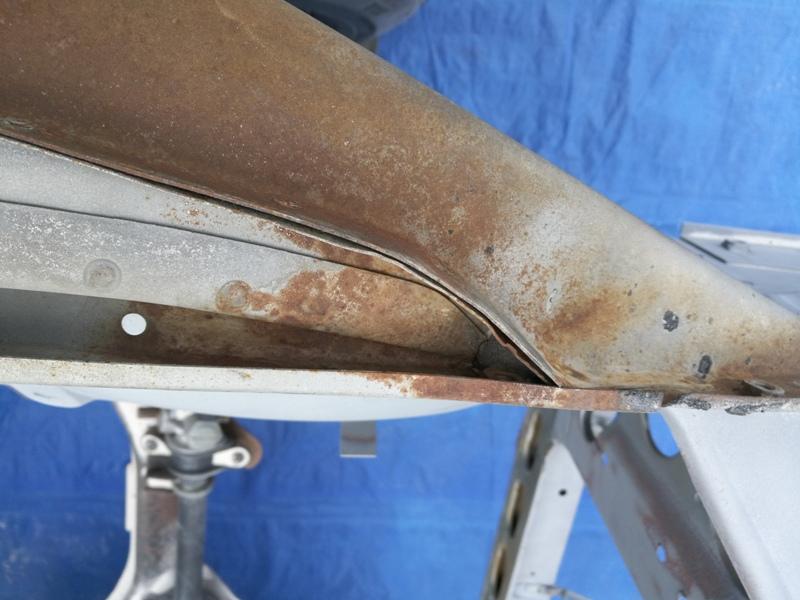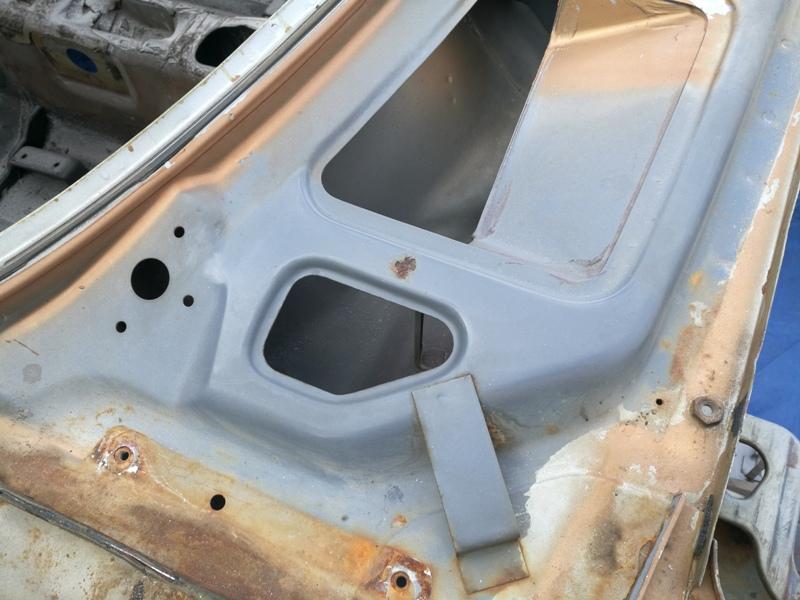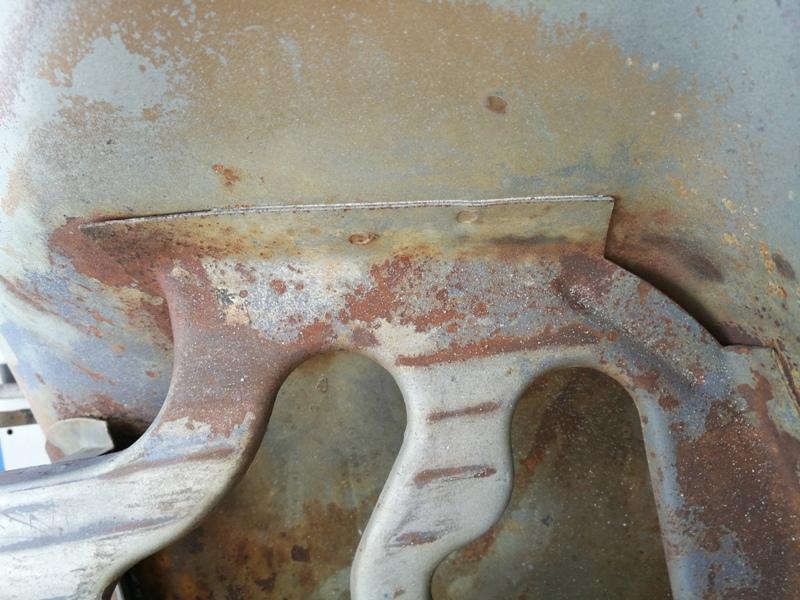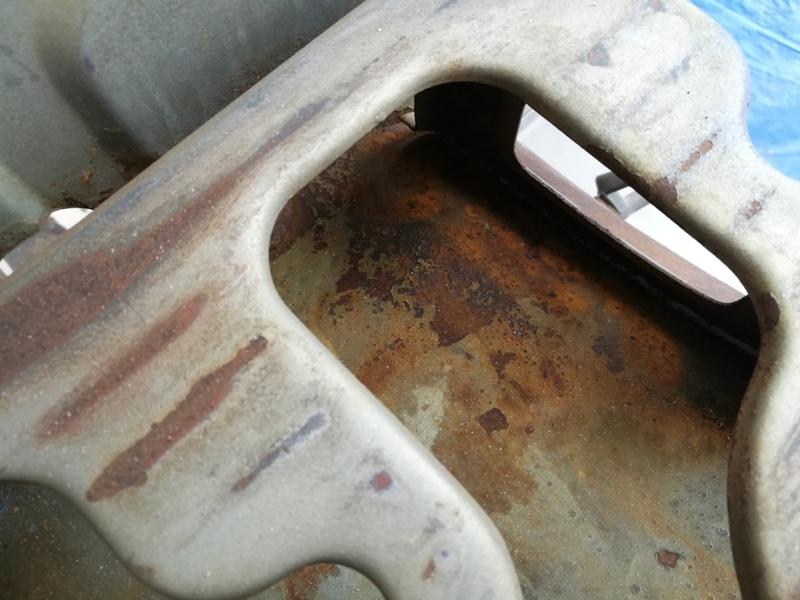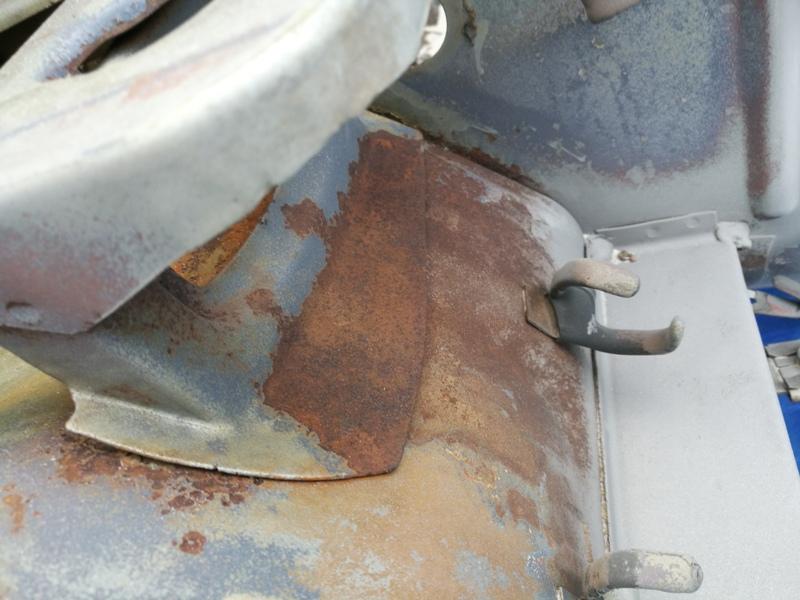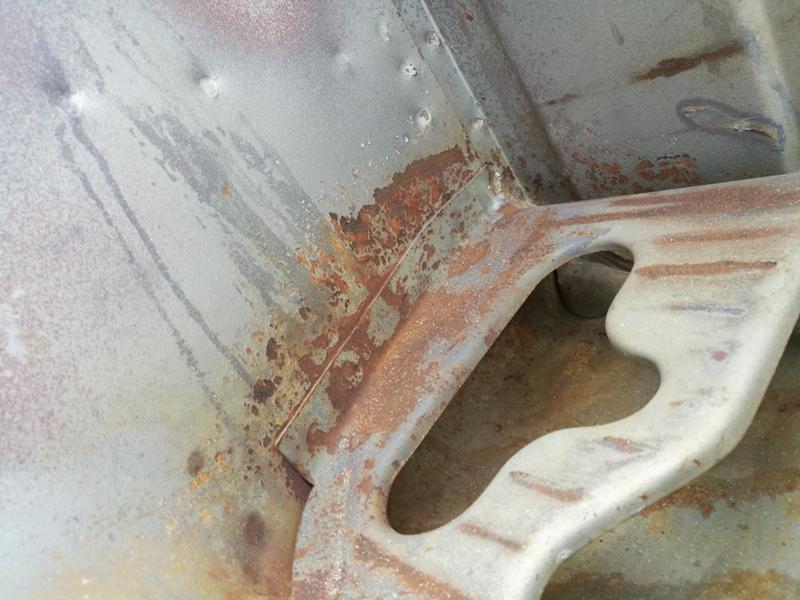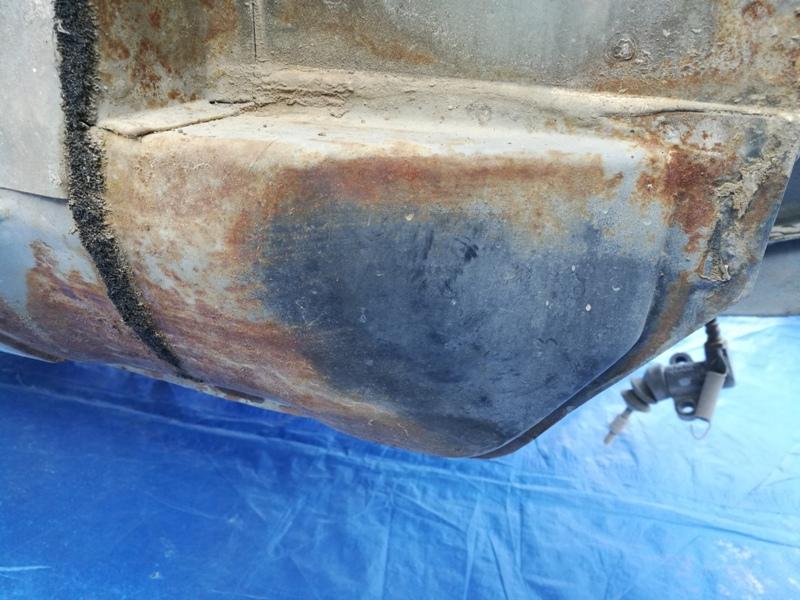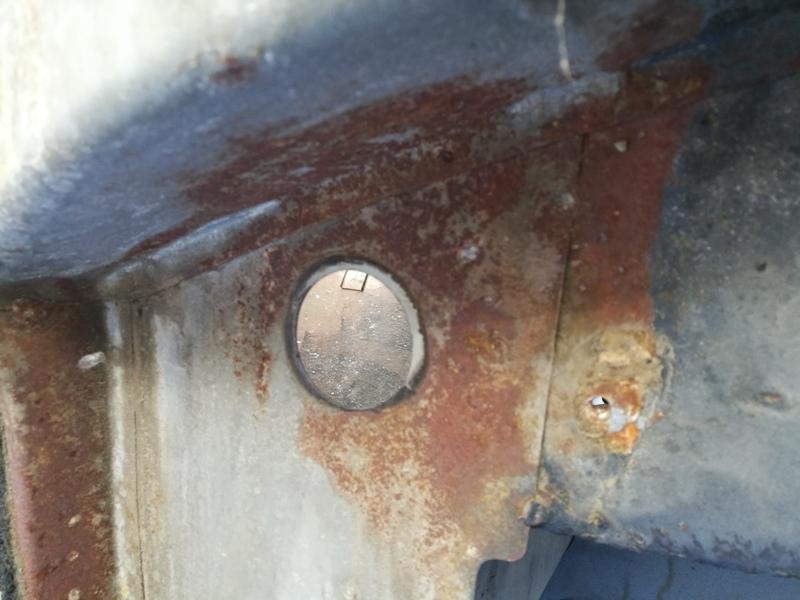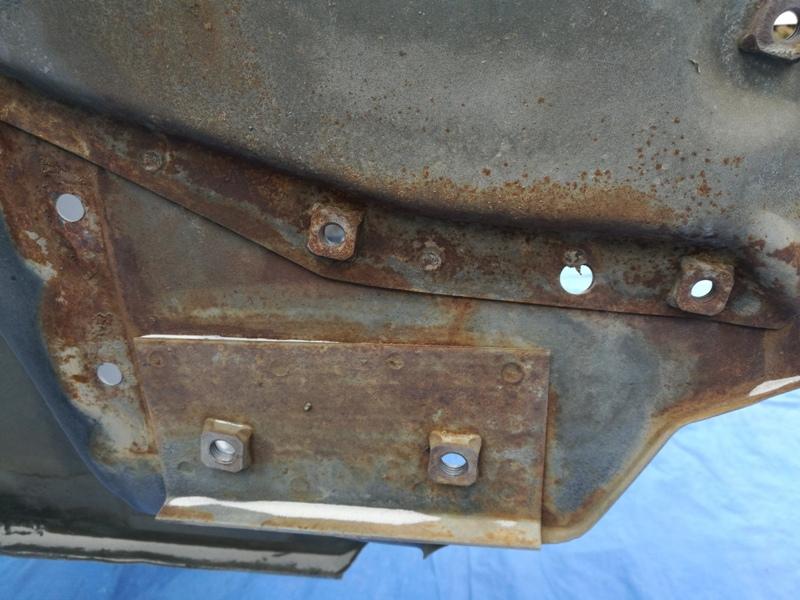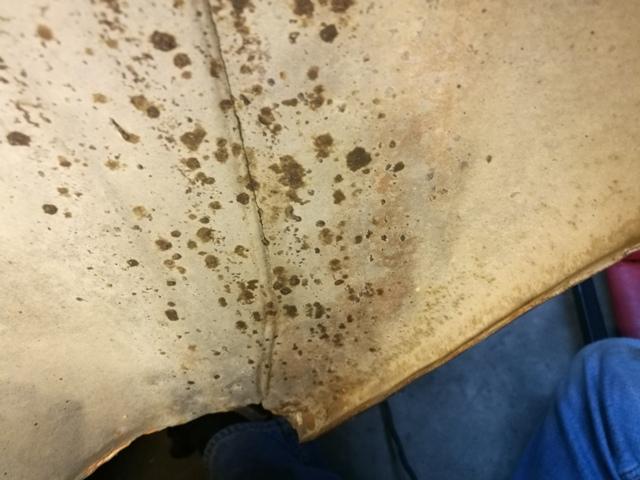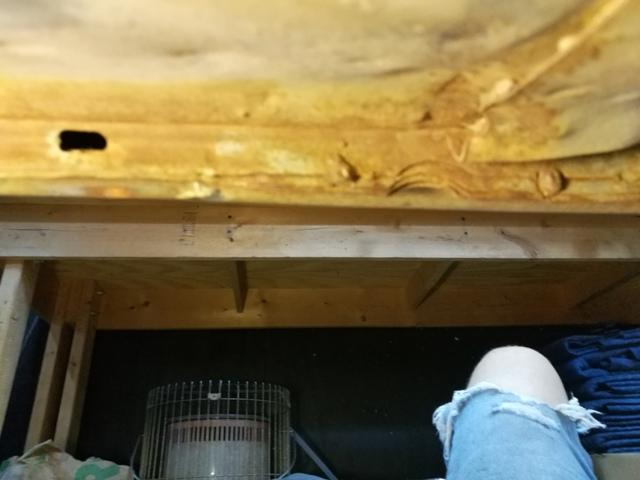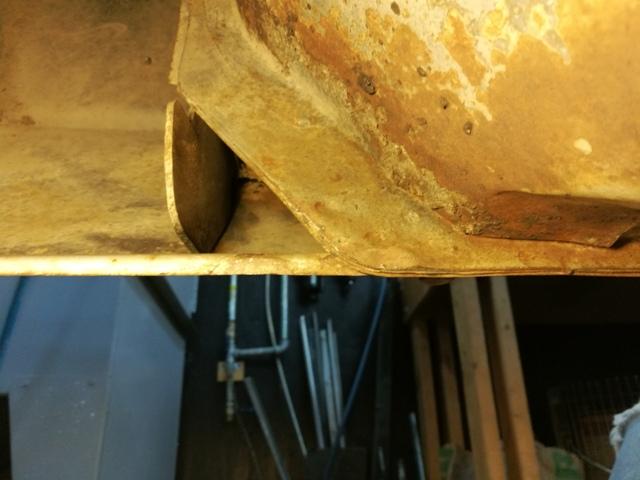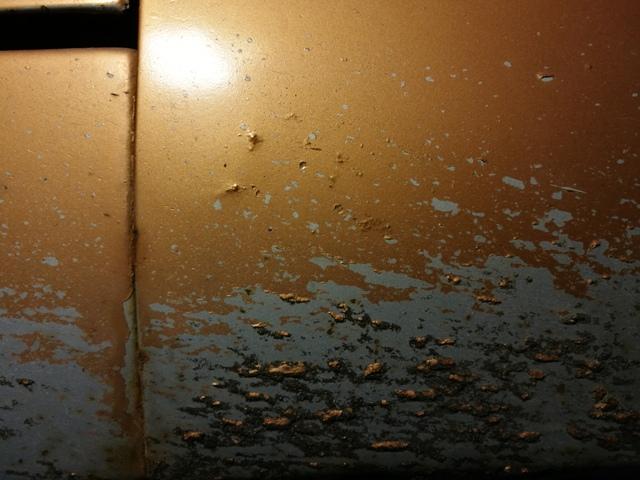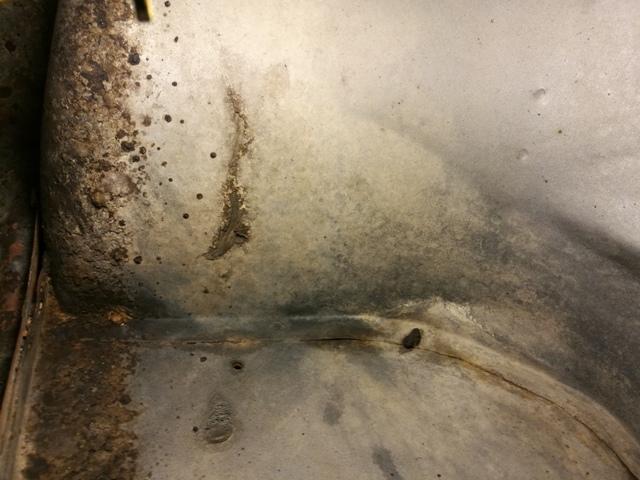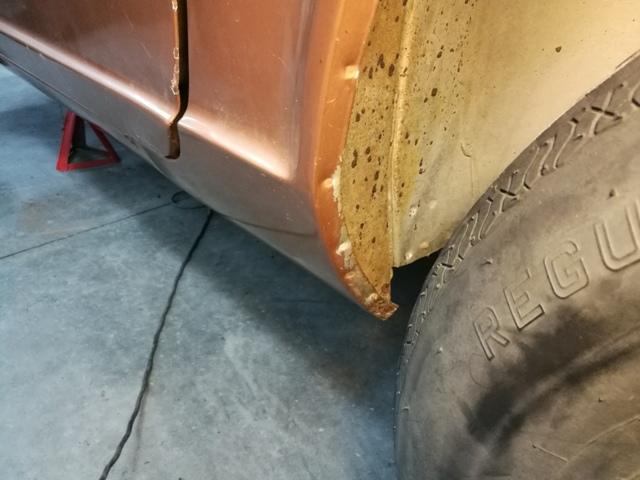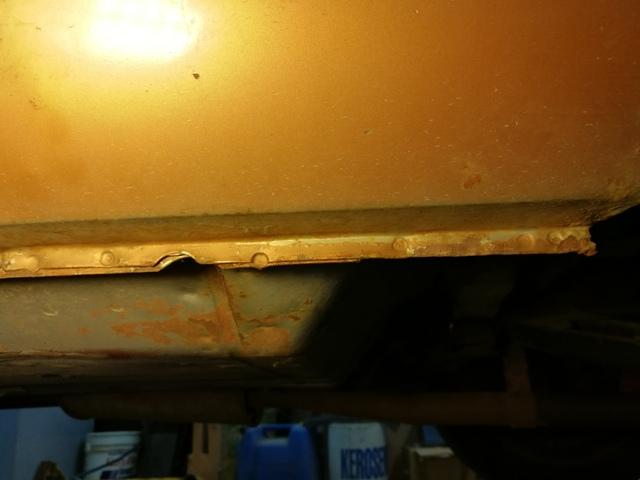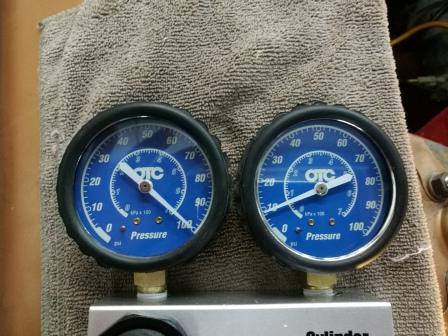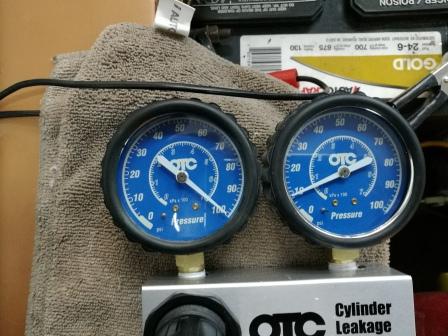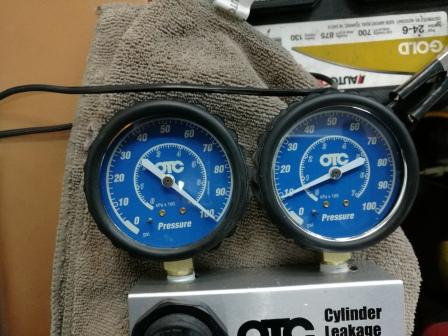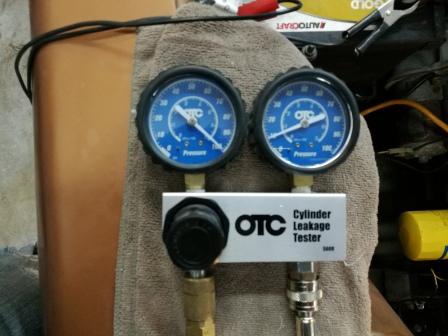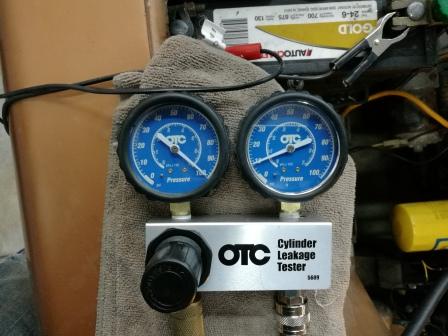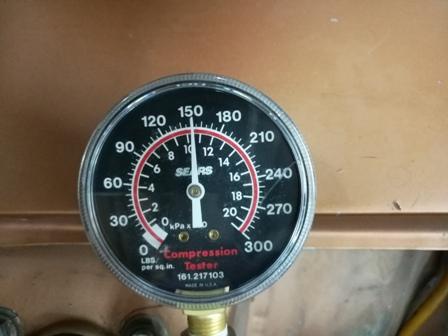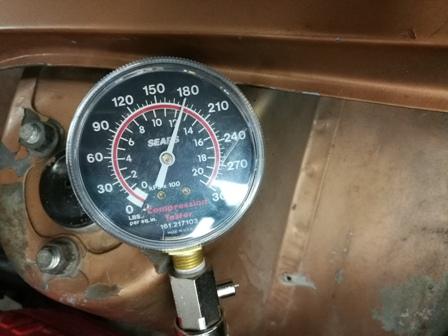Everything posted by inline6
-
Restoration of BringaTrailer 240z - HLS30-35883
Yeah, I am trying to do a high quality restoration (as best I can) and leaving that the way it is would bug me. Going to be a bit of a project. Maybe I will consider buying a spot welder like the Quick Spot II!
-
Restoration of BringaTrailer 240z - HLS30-35883
Speaking of the cars not being perfect off the assembly line, I have a bit of a dilemma. It seems that as it came from the factory, this car has a less than perfect fit where the right rear quarter panel over laps the rocker. I'm kind of inclined to go at this corner and make it right, which would entail dissecting at the spot welds and some miner reshaping. Here are some pictures of how it looks from the factory: Note the middle picture here, where the floor panel is supposed to meet up with the panel that makes the tool door compartment. The attempted spot weld couldn't pinch the parts together because the tool door compartment panel was misaligned at the bottom edge. In the third picture here, you can see that a factory worker appears to have used a MIG welder to fill in a bead in the crevasse. Note gap caused by poor fitment. From the factory there was a bunch of seem sealer in the hole (first pic). Middle pic shows the jack point of the rocker. It is not flat as it should be for proper jack fitment. Seems a shame to leave it like this, but I will have to drill out spot welds and it won't look factory any more.
-
Restoration of BringaTrailer 240z - HLS30-35883
Thanks. Many people make their own and I looked at a bunch of videos on Youtube of their modded engine stand, as well as custom creations. I looked on craigslist on and off for about 8 months without luck before finally taking the plunge, spending what many would call a lot of money on this one. I justified it by telling myself I have three cars that will go on it, and I can sell it for a good bit when I am done. In case anyone is curious about the model, it is an Autotwirler Pro. I am very happy with the condition of the body as I found it under the paint. There were many small dents and the minor damage to the rear end, but thankfully, nothing surprising. I am at that stage of body work where I am epoxy priming, applying and sanding plastic filler, and will be appying high build primer shortly. Not much bondo is going on the car. Mainly, it is taking a small amount along the belt line... just below the body line that runs down the sides of the car. It received lots of door ding hits along the side of the car over the years it was on the road.
-
Is there a list for fasteners?
I've been documenting fasteners in a spreadsheet because I will be sending them off to get them plated and figured they will all get mixed together. I want the right fastener in the right location. The ways discussed so far would require looking up all the fastener part numbers, yes? That may be totally sufficient but I could share what I have if desired. Here is a sample: front sway bar bracket 4 yellow zinc hex head bolts (7 on head) M8 X 1.25 - 20 mm under head - fully threaded 4 yellow zinc M8 split lock washers left rear bumper bracket 2 yellow zinc nuts M10 X 1.25 2 yellow zinc split lock washers - M10 2 yellow zinc flat washers - 22mm od - 10.5mm id right rear bumper bracket 2 yellow zinc nuts M10 X 1.25 2 yellow zinc split lock washers 2 yellow zinc flat washers - 22mm od - 10.5mm id Rear bumper 2 yellow zinc hex head bolts (4 on recess in head) M10 X 1.25 - 25mm under head - fully threaded 2 yellow zinc nuts M10 X 1.25 2 yellow zinc split lock washers - M10 2 yellow zinc flat washers - 22mm od - 10.5mm id 4 special chrome bolts - M6 X 1.0 4 yellow zinc split lock washers - M6 4 yellow zinc flat washers M6 - 14mm od - 6mm id 4 yellow zinc hex nuts M6 X 1.0 8 yellow zinc nuts with locking serrations - M6 X 1.0 Rear hatch latch assy 2 clear zinc phillips pan head machine screws with captive split lock washer - M6 X 1.0 - 15 mm under head fully threaded 2 yellow zinc flat washers M6 - 14mm od - 6mm id
-
Restoration of BringaTrailer 240z - HLS30-35883
Good to know. It seems copper slag and coal slag are pretty aggressive compared to play sand. But much safer, I am sure. Once the outside of the car was stripped to that point, I mounted it on a rotisserie:
-
Restoration of BringaTrailer 240z - HLS30-35883
The car with most of the exterior stripping and metal work complete. The hood got some more work after this pic which can be seen in pics I already shared. The tail light panel and rear apron received a lot of hours because of the light tap that the car took at some point in its life. Also, the front passenger side fender was damaged as you can see in the bring a trailer pic at the bottom of these: Some rust through on the lower corner of passenger fender. Also more metal work to be done on fender (middle pic) Shrinking and stretching was necessary to get this area in good enough shape to require only a skim coat of bondo. BAT pic:
-
Restoration of BringaTrailer 240z - HLS30-35883
Did some searching and reading today. Interestingly, I don't see anyone selling copper slag in the US. I see shopping suggestions of other abrasives in Google Shopping when I search for copper slag. Coal slag is available. Both have descriptions that typically refer to applications which are thick metal (truck frames, trailers, etc.) I see Black Diamond is available in fine and medium. It's pretty cheap. I think I will get some and try it. I have a bunch of suspension parts and other similar items that need to be done, so if this is too aggressive for body panels, I still should get use out of it for these other items.
-
Restoration of BringaTrailer 240z - HLS30-35883
I'm thinking about making a video of sand blasting with play sand just for entertainment purposes. I'm sure that courser and sharper sand is more effective, but much like glass beads, I believe play sand to consist of smaller grains, overall, and thus, more similar to glass beads. They have less weight, and less momentum for a given air pressure, and in my opinion, do not impact with the same force, and do not cause the same level of distortion on thin sheet meal that bigger grains can. That said, the more I read about silica being harmful to health, the more I think everyone should avoid using sand for blasting. Glass beads or coal slag would be better. Where do you get that? I tried looking with Google and found no where to buy it.
-
Restoration of BringaTrailer 240z - HLS30-35883
Some of the smaller panels after dent straightening and sand blasting: And other parts getting stripped. Lots of stripping!
-
Restoration of BringaTrailer 240z - HLS30-35883
Whoops, yeah, Patcon. I am using play sand from Home Depot. Once it has been used and recycled a couple of times, it is very fine. As you can see in these pics, I was removing the repaint layer first and then the original paint and primer. Varying distance, and being careful with "used" play sand works at keeping distortion minimal.
-
Restoration of BringaTrailer 240z - HLS30-35883
Here is the hood stripped inside and out to bare metal. The sand blaster was used on the inside frame parts. The high speed sander was used on the large, flat areas. There was some hammer and dolly work on some minor dents, and some stud pulls on the pointed nose at the front. 80 grit on the DA was used to get it ready for epoxy primer: These pics show the sandblasting the cowl panel. As mentioned by Grannynot, you have to be careful about sand blasting thin panels such as this one.
-
Restoration of BringaTrailer 240z - HLS30-35883
Sticking with paint removal for now, I found that one of the bigger jobs was removing paint from the exterior panels. Certain areas, I was ok with sandblasting after some testing. But for the large surfaces, I switched over to a high speed sander similar to this one, and some 36 grit paper with supporting, backing disc. Interestingly, the disc removed the one layer of repaint, the factory silver, and the factory top coat of primer (dark grey I think - I am colorblind) and left the red (oxide?) primer behind for the most part. I then used a DA sander and 80 grit paper to remove that. It was helpful the way it worked out because the red primer stayed where there were dings and dents. This gave me a visual aid for hammer and dolly work, and hammer and flat punch work. I found some of the dents were best handled by locating the flat punch on the inside of the panel and tapping with the hammer. Here are some representative pics of this work, done on the fenders:
-
Restoration of BringaTrailer 240z - HLS30-35883
After finishing the work to straighten the floors, I sandblasted them, careful to avoid hitting the wiring clips. I followed that with a coat of epoxy primer the next day. If you don't prime quickly where I live in GA, rust will start developing again, typically in the pitted areas where rust was before. Epoxy primed:
-
Restoration of BringaTrailer 240z - HLS30-35883
Yes, I have some previous experience, mainly, what I learned came from restoring my other 240z back in the 90's. With that car, I got lots of experience with cutting out rust and welding in new metal! However, using a stud welder and pins is new to me. No, I put the end of the 2 X 4 section (section was about 12" inches long) on the inside floor, with the 3 and 1/2" side right up against the edge of the hump which runs over top of the rail. And then I hit the other end of the 2 X 4 with the 5 lb hammer. Doing that transfers the force directly onto floor where the weld flange from the frame rail attaches - where it is spot welded to the floor. It is double thick there - floor panel and frame flange. Hitting it repeatedly along the sides of the hump where needed is quite effective at removing the arch (that developed during the cars active driving life) from the front floor section.
-
Restoration of BringaTrailer 240z - HLS30-35883
Here are some more pics showing work done with the stud welder. The frame rails and floors typically take a fair amount of abuse on these cars. To straighten the dents in the rails, I used the 2.5 mm pins a fair amount. The 2.0 mm pins also got used in this application, but only for areas toward the center of the rails, away from the side walls. Dented areas on or near the edges require more pulling force. Also, the floors often get bowed from the impacts to these rails over the years the car is on the road. They should be flat. So, when looking front to back and side to side at the lowest surface of the frame rail, they should be flat. A section of 2 X 4 and a 5 lb hammer used judiciously will set things "straight". ? Placing the 2 X 4 strategically on the inside surface, I hammered hard against the wood to move the floor surface downward. There were also a few areas like this which received impacts. I spent two week ends shining a bright light at sharp angles onto both the inside and outside surfaces of the floor to find dents and imperfections. Welding studs and pulling, hammer and dolly work, and using flat punches and hammers, I straightened every imperfection I could find. Then did final clean-up with the sand blaster on the inside surface and sprayed epoxy primer.
-
Restoration of BringaTrailer 240z - HLS30-35883
One of the new tools I bought to utilize with this restoration is a stud welding gun: I also got two sizes of pins, 2.0mm and 2.5mm: I had never used one before and was looking forward to learning how to use it well. It's important to me to improve skills and to become good at doing a thing because it becomes much more enjoyable when you can spend a 1/4 of the time (than you used to) to get results that are twice as good as your original efforts. Here was the one of the first dents that I worked on at the rear edge of the right quarter panel. Note that the metal is pushed in enough to bulge outwards on the left side into the tail trim panel opening area. As I welded pins on and used a slide hammer to pull on them, I had to work that area back flat as well. Here is after my efforts. Three of the pins broke loose causing the small holes. I think I could do it better, without making holes, now that I have more hours of experience behind me. A touch up with the welder will fix these holes up. If you look closely, you can see other areas that have been worked with the stud welder and pins: This car was hit lightly in the rear, and the bumper caused some indentations in the tail panel and quarter panels: A couple of in progress pics:
-
Restoration of BringaTrailer 240z - HLS30-35883
Interesting. What do you think of using a rust converter liquid and brushing it on and soaking that part of the battery tray? I don't want to alter the cosmetic look - I want to keep the factory spot welds.
-
Restoration of BringaTrailer 240z - HLS30-35883
That is a nice design. I will look at that one next time. I have one, from 3M I believe, which is similar. I may go with that one next time as field of vision looks like an improvement. I have been using play sand because of it's light weight. I haven't detected distortion using it. Years ago, I learned that distortion could result when I used a heavier grain sand. How does the coal slag perform? I assume that it is safer because it doesn't break into particles as small as silica does, and thus the respirator is more effective?
-
Restoration of BringaTrailer 240z - HLS30-35883
I am indeed. I contacted a company at the start of the project to see about getting the entire car soda stripped, but they said they don't do cars. I have had the sand blaster for years. You don't want to read about how bad silica is for you.
-
Restoration of BringaTrailer 240z - HLS30-35883
-
Restoration of BringaTrailer 240z - HLS30-35883
Thanks Grannyknot. Virginia (my original home) was bad enough for rusting out Datsuns. I can't imagine one surviving up in Toronto unless it was stored most of the time away from the snow and rain, driven only when roads were dry and salt free. I've noticed that my modern cars used clips which are water proof for securing emblems and trim items. The Z, on the other hand, has holes in the sheet metal with just metal "barbed" clips. They are not water proof, and let water into the rear quarter panel and the rear hatch. My BMW, as an example, has solid plastic plugs with little gaskets around the flange which seat against the sheet metal. They snap into holes in the sheet metal to secure the trim to the car. I've been thinking about doing the same with this car. Whatever solution I come up with, it would have to be 100% invisible. Silicone rubber is always an option.
-
Restoration of BringaTrailer 240z - HLS30-35883
Love it every time I look at parts that usually rust out. Here are some pics as I went around the car when I first could examine it well: Right rear wheel well at bottom corner of rocker: Inside bottom edge of passenger side rocker: Outside bottom corner of passenger fender (fenders are original to the car) - note rust pitting, and inside frame double panel at tension rod mount location: Passenger front inner wheel house area: Driver side wheelhouse and rocker lower corner: Inside driver side rear wheel house looking at bottom, front corner, and from center of car looking at inside of same rocker corner: I didn't take pictures of the floor as delivered, but here are some of them in their sand blasted state: What little rust there was is gone now
-
Parts Wanted: Need Sheet Metal from Doner 240Z
View Advert Need Sheet Metal from Doner 240Z Hi, I am restoring a Z and I'd like to get my hands on the area of this picture where a previous owner cut holes for speakers. Ideally, to save the effort required and to cover my needs, I just need enough of this to replace the damaged area. Vertical cuts from top down, with about 1/2" on either side of the indentation area and a horizontal cut below it should be sufficient. I need both sides. Anyone have a rusty heap they can pull this from? Garrett Advertiser inline6 Date 11/03/2019 Price Category Parts Wanted Year 1971 Model 240z
-
Restoration of BringaTrailer 240z - HLS30-35883
After I had let the engine run several times, I did both a leak down and a compression check. The leak down tests showed about 9% across the board: 1, 2, 3: 4, 5, 6: The compression tests showed more variability, with cylinders 3 and 4 and 6 generating lower numbers: 1, 2, 3: 4, 5, 6: With those tests complete, it was time to remove the engine:
-
Restoration of BringaTrailer 240z - HLS30-35883
Thanks! I kind of have this picture in my head of a 240z from the past... one that was modded by the original owner. Back in like 1972, when the car was a hot item, the mods: a bump in engine power, a nice sounding exhaust, and meaty tires, would have been rare on a 240z. And to complete the vision, the recently removed air pump, and exhaust manifold, etc. is sitting in a box tucked in the corner of the garage along with the original wheels and tires in a stack on the garage floor. ?




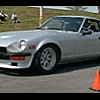
 Subscriber
Subscriber
